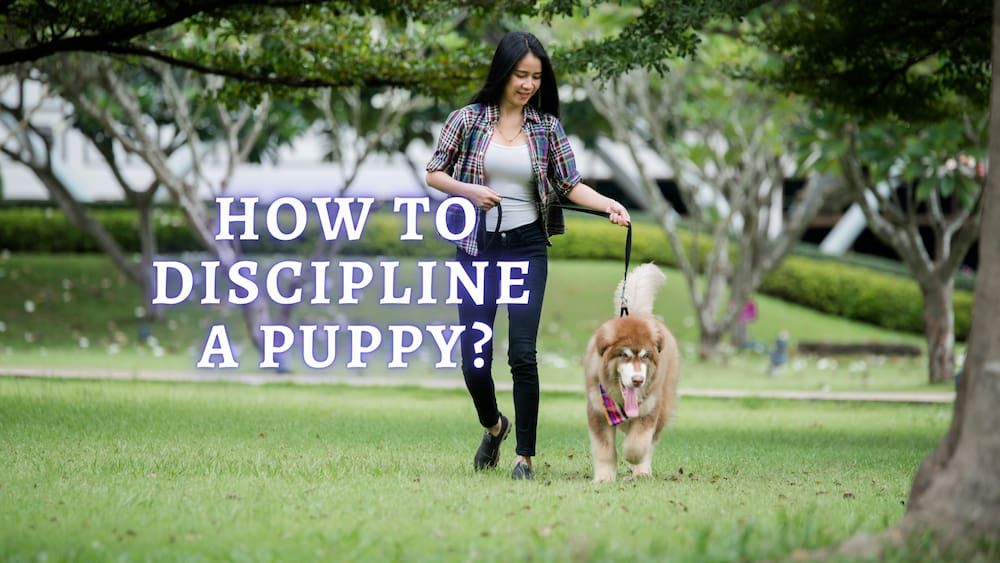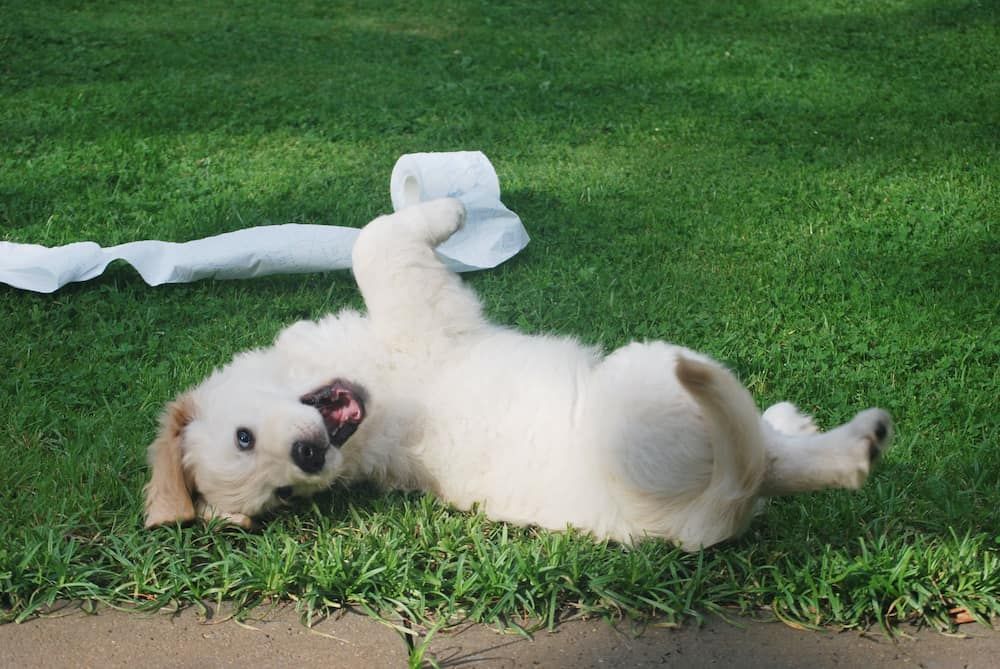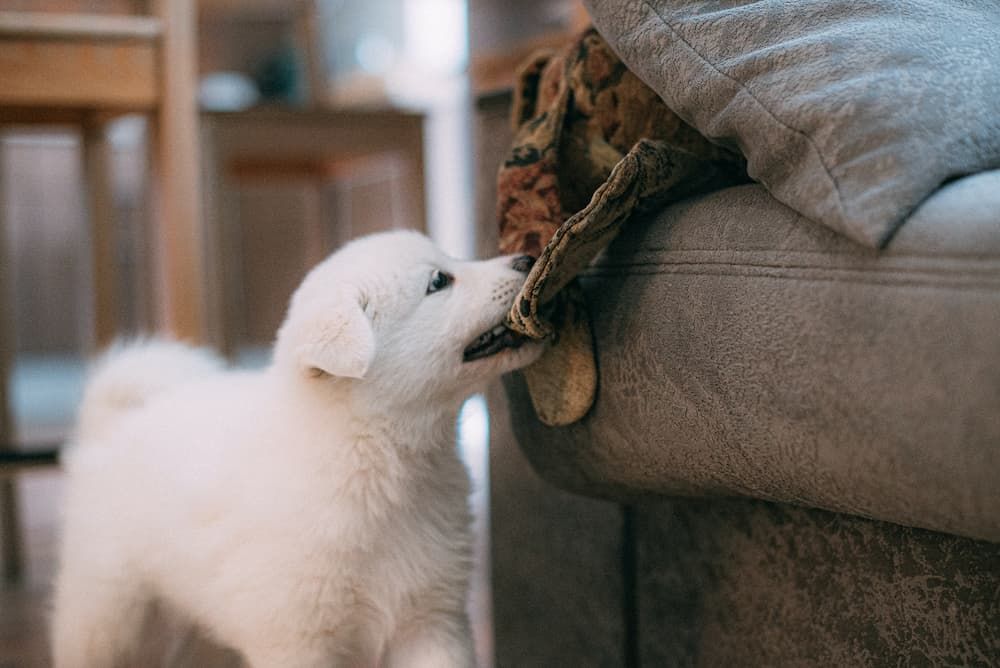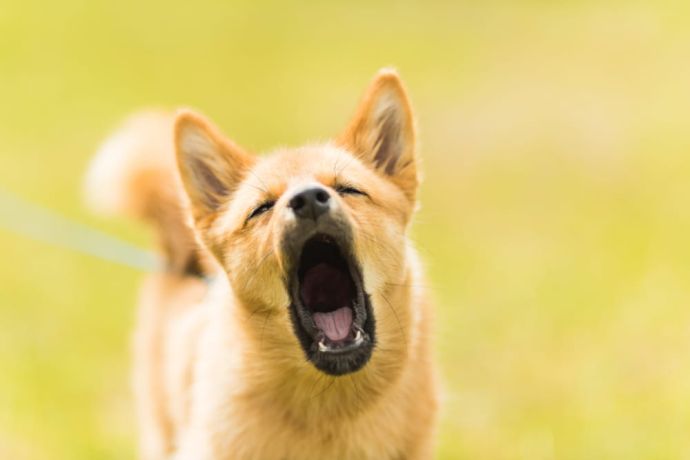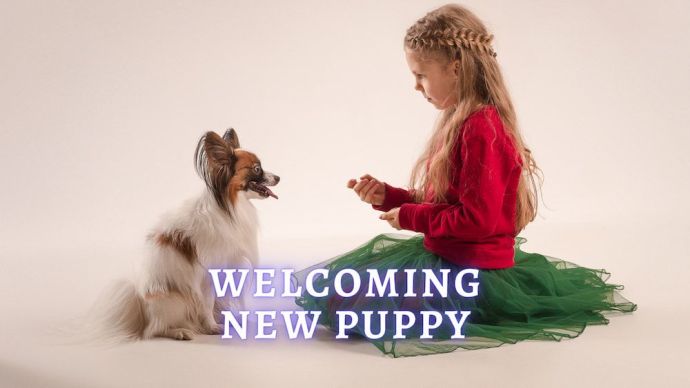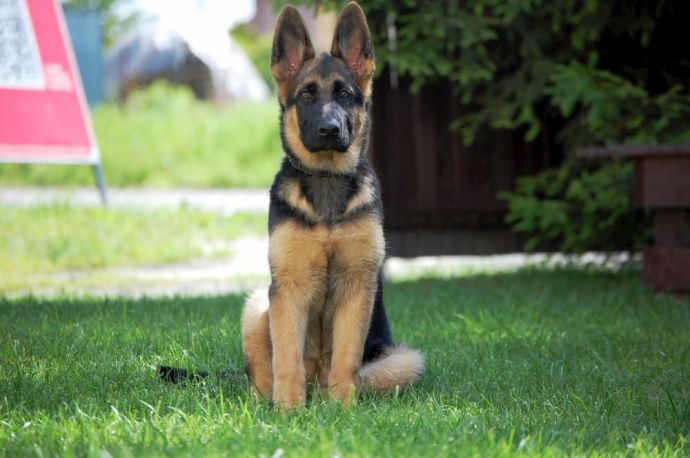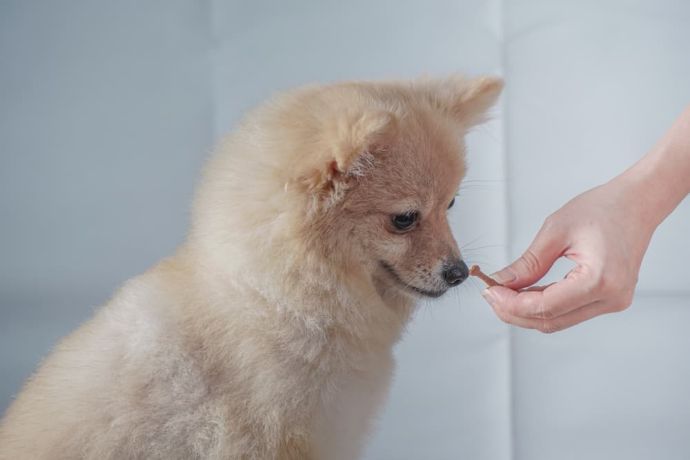How to Discipline a Puppy? Strategies to Teach Your Puppy Proper Behavior
Written by:
Author: Marissa Prizio
Marissa Prizio attended the University of New Hampshire and earned a bachelor's degree in biomedical Animal Science. Marissa has always enjoyed writing; she was even mixing literature classes into her science major in college. During her writing career, she has edited eBooks, written for a variety of websites, and created audio-visual courses for sustainability.
View all 36 articlesLearn about our editorial process and veterinary review board.
Viewed: 164
Updated on: 08/28/2021
Becoming a puppy parent is thrilling and a gratifying experience, but once all of that new puppy excitement settles in, an undeniable question looms in the air.
“How should I discipline my new puppy?”
You are not the first, and you certainly won’t be the last new puppy parents to contemplate how to discipline a puppy. Dogs are not born knowing every intricacy of being man’s best friend. They naturally love barking, chewing items, and they go to the bathroom regardless of where they are. Part of being a pet parent is teaching your puppy how to act in a kind and effective manner that considers their view of the world.
The way we discipline puppies contributes to a lot of factors in their future. Their behaviors, learned skills, and the bond they will develop with you are all influenced by the way they are trained. If you are looking to make the most of your puppies’ younger years and help them develop into your ideal furry friend, then understanding proper dog training should be at the top of your priority list. The good news is, you don’t need to be a dog trainer to manage your puppy’s behavior.
Here you will find a comprehensive explanation of how to discipline a puppy, explaining all of the do’s and don’ts of puppy training. There are plenty of myths surrounding puppy training, but there is also plenty of modern research, so let’s dive into it!
What is Discipline?
Discipline is a word that tends to come with a negative connotation. This is partly due to the word’s definition, which includes training a human or animal to obey rules while using punishment as a form of correction for negative behavior. [1] While many people use the term “discipline” when referring to correcting bad behaviors in dogs, it is technically being misused in this context since punishment should be avoided.
For the purposes of this article, let’s redefine discipline as taking kind and concise action to teach your dog what is right and what is wrong.
The topic of dog training most commonly arises after your puppy has done something that ended in an undesirable result for you. This may include going to the bathroom indoors, chewing your favorite shoes, nipping, or barking at inappropriate times.
These situations may be frustrating at times, but it is important to do your best to stay calm and react reasonably to all of these issues. Puppies are new to the world, and just like human babies, there is much they don’t understand, so they act based on instinct until they learn otherwise.
The goal of disciplining a pet is to help them learn good behavior to develop into a well-trained dog. The process of providing your dog with the proper structure is heavily dependent on your actions, so you must understand proper methods of discipline.
Let’s break this topic down further and discuss other methods so you can be confident in your understanding of how you should and should not respond to your pup’s behavior.
READ MORE: The 10 Best Online Dog Training Courses
What Is The Difference Between Discipline And Punishment?
When an undesirable action is committed, it is not uncommon for humans to think of punishment as an immediate response. Punishment is defined as inflicting a penalty that generally includes negative consequences like suffering, pain, or loss. [2]
While reprimanding is generally assumed to exist in conjunction with punishment, it doesn’t have to. Discipline, especially in training a dog, can simply include redirecting a negative action towards a positive one.
On the other hand, punishment almost always includes inducing fear through painful physical actions or stress-inducing actions. Proper direction is what makes a good dog, not punishment.
Is It OK To Physically Punish My Puppy?
It is absolutely NOT okay to punish your puppy.
Puppies are very impressionable at a young age, and physically punishing them is far more likely to instill fear and lead to avoidance than teach them that something is wrong. This is especially true if training includes a dog being physically punished by an owner.
Hitting, holding down, or using any other physical punishment on your pup when they engage in bad behavior does not teach them that the behavior is to be avoided. Instead, it teaches dogs to fear you, cause anxiety, and teach them that human hands can be dangerous.
As a result, many dogs trained through punishment are likely to become hand shy, and their bond with their owner will not be a healthy one. [4] Some dogs may even still engage in a punished behavior when you are not around, realizing that they can’t be punished if you don’t notice what they have done.
While punishment may seem like a quick fix, and it may feel natural when you are annoyed with something your pup has done, it is not a permanent solution. Some dog trainers may use some form of punishment or dominance, but a professional dog trainer will focus on working with a dog’s behavior. Punishment, especially physical punishment, is likely to cause far more problems to arise rather than fixing existing behavioral issues or promoting good behavior.[5]
When Should I Start Disciplining My Puppy?
It is crucial to start disciplining your puppy as soon as possible.
The moment your pup opens its eyes for the first time and begins to explore the world, your puppy starts learning from its experiences. While puppies may be limited in their ability to attend training classes and dog parks until they are fully vaccinated and dewormed, they can begin learning how to act at home.
Puppies’ earliest months in life play a crucial part in developing proper social skills and dispelling fear-based responses. [6] This developmental period also leaves them highly susceptible to developing a fearful or anxious personality from acts of punishment.
It is also important to note that puppies can learn quickly. A majority of basic commands and behaviors are taught while dogs are still young. If they are not disciplined for performing bad behavior, they will continue to do it. Sometimes patterns of behavior can develop after a dog gets away with “bad” behavior just once. [4]
For example, giving puppy attention and praise when they are barking may seem harmless, but your positive reinforcement will motivate them to continue regular barking as they grow. By the time they are full-grown dog, and the barking is annoying rather than cute, it will be far more difficult to train them out of that behavior since they perceive it as a positive behavior.
How Do I Start Disciplining My Puppy?
Discipline starts with building a routine and providing careful supervision.
Building a daily routine is crucial for the well-being of you and your pup. A predictable schedule containing all of the activities they need to be both physically and mentally cared for will keep your dog calm and prevent stress. Activities in a dog’s routine should include exercise, play, socialization, meals, bathroom breaks, and nap times. When you start to build a routine, you can even suit it to your schedule, so it is easier to stick to.
Even young puppies will catch onto a routine rather quickly, and these routines will also help you assess any behavioral problems your puppy may exhibit. It is nearly impossible to guess how your dog will act as it develops by simply looking at it. To determine what kind of behaviors your puppy will naturally display, you have to spend time with them and be aware of their actions. This brings us to our next main focus in puppy training, supervision.
Supervising a puppy can feel like a full-time job, but it is well worth the work. Any time your pet is not in a secured area like its crate, you should be able to keep an eye on them at all times. This is one of many reasons why a professional trainer will recommend crate training, but we will cover how you can do that in another article.
An unsupervised puppy can get into some serious trouble and cause some lasting damage to your belongings. Chances are, you won’t even notice these issues until the damage has been done, and this is problematic because you can not correct a puppy if they are not caught in the act.
Dogs are very present-minded, especially when they are young. If you intend to discipline your dog for bad behavior, you must do so while the behavior is occurring, not after. This method makes the most sense in a dog’s mind. By interrupting the bad behavior and redirecting it, you show your pup that the behavior is unapproved. If you correct your pup after the behavior happened, they are more likely to be unsure of what is unapproved, and they may repeat that behavior.
If you do catch your dog engaging in undesirable behavior, it is best to interrupt them and redirect their attention to good behavior. For example, you may catch your dog chewing some shoes or other household objects. You can use a firm command and concise cue word, like “no,” “Ah-ah,” or other simple commands that get their attention without yelling. Once this disrupts the behavior and they stop chewing the shoe, you can swap it for one of their puppy toys and use positive reinforcement with treats or praise. [3]
A similar strategy can be applied to house training. Providing your pup with positive feedback and a “good job” cue when they go to the bathroom outside is much more impactful than punishing them for accidents in the house. Potty training that is positively reinforced is more enticing for dogs to willfully follow.
It may require a few repetitions, but interrupting and redirecting bad actions to better alternatives will guide your puppy to understand what actions are considered good. This type of discipline can only be accomplished if you supervise your pup because only then will you be able to interrupt and redirect bad actions in the act.
Always remember that good behaviors deserve good reinforcement.
What Are the Do’s and Don’ts Of Dog Discipline?
Do’s
Don’ts
- Do supervise your puppy at all times.
- Maintain a routine that meets all of their needs.
- Interrupt undesirable behaviors while they are occurring.
- Use a firm tone and consistent cues to address bad actions.
- Redirect bad behaviors to good alternatives.
- Praise your puppy for engaging in desirable behavior through positive reinforcement.
- Never hit, hold down, or use physical punishment toward your puppy.
- Do not use intimidation as a form of maintaining control.
- Don’t yell, scream, or project a frighteningly loud noise at your puppy.
- Never deprive your puppy of necessities to reprimand them.
- Do not try to discipline a puppy if they are not actively participating in undesirable behaviors.
How To Prevent Puppy Bites During Playtime?
Puppies naturally seek to explore the world using their mouths, but those sharp puppy teeth could create some playtime problems. It is normal puppy behavior to want to chew and mouth all things, including people. Due to their limited understanding of the world, puppies don’t innately understand that their bites and nipping can hurt others, even during play.
Learning to control the intensity of their mouthing is something puppies often learn from playing with their littermates. If you notice one puppy biting too hard during play, the puppy who was bit will cry out and stop playing. This yelp is a sign to the puppy who dealt the bite and lets them know that the bite was too hard. Over time these interactions help puppies understand the need to be gentle with their teeth and teach them good behavior during play.
You may not be a puppy, but a similar method can be used to discipline your pup out of biting. While playing with your puppy, allow them to mouth your hand, and as soon as they chew too hard, yelp and stop playing by allowing your hand to go limp. At this point, your pup should stop biting and possibly gently lick your hand. Repeat this every type your puppy engages in rough play. [7]
If yelping does not deter your puppy from playing rough, you can cease playing for a period of time before trying again. Every time they play too rough, stop playing and leave your puppy to take a short “time-out.” This will eventually teach them that playing only continues when they are gentle and that biting hard is inappropriate behavior.
If you think they are biting out of discomfort from teething, then offering a chew toy or tug toy is another good alternative to minimize biting. Chewing things is a natural way for puppies to relieve teething pain, so turn their attention to something to chew toys to correct this behavior in a positive way.
There is a way to apply positive feedback discipline to almost every dog training situation. Now that you know the do’s and don’ts of discipline, you can apply them to all aspects of your furry friend’s life and help them be the best version of themselves. Happy training!
READ MORE: Possessive Aggression in Dogs: What You Should Know
Article Sources:
- “Definition of DISCIPLINE.” Dictionary by Merriam-Webster, 7 May 2021, merriam-webster.com/dictionary/discipline.
- “Definition of PUNISHMENT.” Dictionary by Merriam-Webster, 20 Aug. 2021, merriam-webster.com/dictionary/punishment.
- Horwitz, Debra. “Using Punishment Effectively.” VCA Hospitals, vcahospitals.com/know-your-pet/using-punishment-effectively.
- Horwitz, Debra. “Puppy Behavior and Training – Dealing with Undesirable Behavior.” VCA Hospitals, vcahospitals.com/know-your-pet/puppy-behavior-and-training—dealing-with-undesirable-behavior.
- Castro, Ana, et al. “Does Training Method Matter? Evidence for the Negative Impact of Aversive-Based Methods on Companion Dog Welfare – PubMed.” PubMed, 1 Jan. 2020, pubmed.ncbi.nlm.nih.gov/33326450/.
- “When Should You Start Training Your Puppy?” American Kennel Club, 26 May 2021, akc.org/expert-advice/training/start-training-your-puppy/.
- “Mouthing, Nipping and Biting in Puppies.” ASPCA, aspca.org/pet-care/dog-care/common-dog-behavior-issues/mouthing-nipping-and-biting-puppies.
 Dog Veterinary Tips Why is my Dog throwing up: Causes and Preventing (Veterinary Advice)
Dog Veterinary Tips Why is my Dog throwing up: Causes and Preventing (Veterinary Advice) - 22473
- 5
 Dog Care Why Is My Dog Bleeding From Its Butt? Causes and treatment of rectal bleeding in the dog
Dog Care Why Is My Dog Bleeding From Its Butt? Causes and treatment of rectal bleeding in the dog - 18119
- 0
 Dog Care My Dog Keeps Scratching His Mouth: Reasons Why Your Dog Scratching Face
Dog Care My Dog Keeps Scratching His Mouth: Reasons Why Your Dog Scratching Face - 17474
- 1









